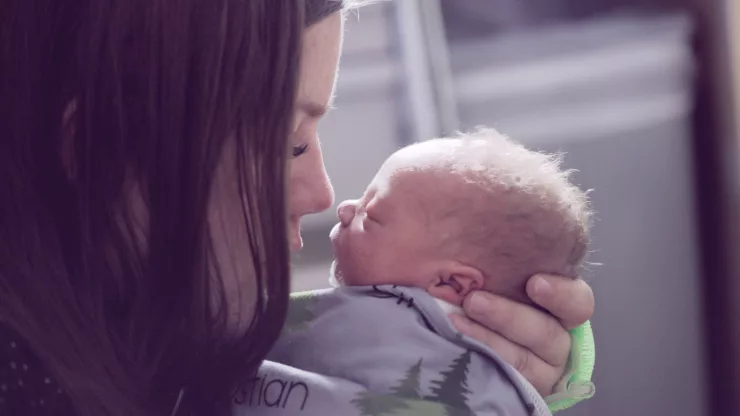Embracing the Journey
Transitioning from being single to being in a relationship can be an exciting and challenging journey. While being single allows for independence and freedom, being in a relationship offers a deeper connection and sense of companionship.
However, the transition can be difficult as it requires adjusting to a new lifestyle, understanding differences, and navigating challenges.
In this article, we will discuss how to navigate the transition from being single to being in a relationship, build a strong foundation, and celebrate love and partnership.
Jump to Section
Understanding the Differences
One of the first steps in navigating the transition is to understand the differences between being single and being in a relationship. Some of these differences include:
- Compromise: In a relationship, both partners need to compromise and make decisions together. This can be challenging for those used to making decisions on their own.
- Communication: Communication is key in any relationship. It’s important to express thoughts and feelings openly and honestly.
- Shared experiences: Being in a relationship offers opportunities to share experiences with a partner, such as traveling, trying new activities, and building memories together.
- Personal space: While it’s important to share experiences, it’s also important to respect each other’s personal space and independence.
Understanding these differences can help prepare for the transition and set realistic expectations.
Navigating the Challenges
The transition from being single to being in a relationship can also come with challenges. Some of these challenges include:
- Adjusting to a new routine: Being in a relationship often means adjusting to a new routine and finding a balance between personal time and time with a partner.
- Different interests: Partners may have different interests and hobbies, and it’s important to find a balance and support each other’s passions.
- Disagreements: Disagreements are normal in any relationship, but it’s important to communicate effectively and find a solution together.
- Trust: Trust is a crucial component of any relationship, and it can take time to build trust with a new partner.
Navigating these challenges requires patience, communication, and a willingness to work together.
Building a Strong Foundation
Building a strong foundation is essential for a healthy and fulfilling relationship. Some ways to build a strong foundation include:
- Communication: Open and honest communication is key in any relationship. It’s important to express thoughts and feelings and listen to each other.
- Trust: Trust is built over time through consistent actions and communication. It’s important to be reliable and honest with each other.
- Shared values: Having shared values and goals can help create a strong foundation for a relationship.
- Quality time: Spending quality time together is important for building a connection and creating memories.
Building a strong foundation takes time and effort, but it’s worth it for a fulfilling and long-lasting relationship.
Embracing Growth and Change
Being in a relationship requires growth and change. It’s important to embrace these changes and grow together as a couple.
Some ways to embrace growth and change include:
- Learning from each other: Partners can learn from each other’s experiences and perspectives, which can lead to personal growth.
- Trying new things: Trying new things together can help create new shared experiences and keep the relationship exciting.
- Supporting each other’s goals: Supporting each other’s goals and aspirations can help each partner grow and achieve their full potential.
- Respecting each other’s differences: Respecting each other’s differences can help create a stronger connection and understanding.
Embracing growth and change can lead to a stronger and more fulfilling relationship.
Celebrating Love and Partnership
Finally, it’s important to celebrate love and partnership. Some ways to celebrate include:
- Expressing gratitude: Expressing gratitude for each other and the relationship can help create a positive and loving environment.
- Celebrating milestones: Celebrating milestones, such as anniversaries and special occasions, can help create cherished memories.
- Showing affection: Showing affection, whether through physical touch or kind words, can help strengthen the bond between partners.
- Making time for each other: Making time for each other and prioritizing the relationship can help show how much you value and appreciate each other.
Celebrating love and partnership can help create a happy and fulfilling relationship.
FAQ
How do I know if I’m ready to transition from being single to being in a relationship?
It’s important to take time to understand your own wants and needs before entering a relationship. Consider whether you’re emotionally ready to commit to a partner and whether you’re willing to compromise and communicate effectively.
How do I navigate disagreements in a relationship?
Effective communication is key in navigating disagreements. It’s important to listen to each other’s perspectives and find a solution together.
How do I build trust with a new partner?
Trust is built over time through consistent actions and communication. Be reliable and honest with your partner and follow through on your commitments.
How do I keep the relationship exciting and fulfilling?
Trying new things together, supporting each other’s goals, and making time for each other can help keep the relationship exciting and fulfilling.

With a deep passion for personal development, Ben has dedicated his career to inspiring and guiding others on their journey towards self-improvement.
His love for learning and sharing knowledge about personal growth strategies, mindfulness, and goal-setting principles has led him to create My Virtual Life Coach.
Contact Ben at [email protected] for assistance.




